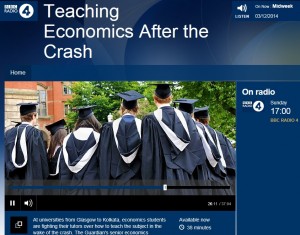How can we put the Middle Way into practice on a daily basis? I have been recommending various already established practices for the integration of desire, meaning and belief, but a practice may also be needed to bind them together and provide a constant reflective reminder of the Middle Way as a framework. It is that recognition that has led me to develop this Middle Way Meditation Practice. As yet this practice has not been extensively trialled (only by me), so I’d like to invite you to try it out and feed back to me how you get on. The weekend retreat on meditation in June should be a further opportunity to improve on this practice.
This practice is loosely inspired by Buddhist vipassana practices, with one important difference: whilst vipassana practices involve trying to bring oneself into alignment with some ‘truth’ that is the subject of the meditation, in this one, one works only through the process of balancing and integrating desires, meanings and beliefs that one finds in one’s own experience. The goals are open ended, and only the general integrative direction is prescribed by the practice.
This practice is intended to start from a base of mindfulness meditation. I would recommend at least five or ten minutes of preparatory mindfulness practice (e.g. consolidating posture, following the breath, body scanning, just sitting and accepting whatever experiences come up) to help ensure that the following practice is done in a state of sufficient overall awareness. If you have never done any kind of mindfulness practice, I suggest that you learn to do one (and become familiar with how to sit in meditation) before attempting this practice.
After the mindfulness warm-up, the practice is divided into four stages: desire, meaning, belief and absorption. These could be done in variable amounts of time, but I would suggest at least 5 minutes for each stage. If you find there is too much content here, it could potentially be broken up into separate meditations so that desire, meaning and belief were reviewed individually, each preceded by mindfulness practice and ended with the absorption stage.
1. Mindfulness warm-up
2. Desire stage
- Balance your body and become aware of physical sensations of balance in your posture
- Reflect on ‘sticky’ desires you may encounter in current or recent experience, whether these are emerging as thoughts or feelings. They may have emerged as hindrances to practice during the mindfulness preparation stage – for example, distracting sexual feelings, or anxiety about a forthcoming event.
- Reflect on the contrary desires that make these ‘sticky’ desires problematic (e.g. your desire to meditate and be free of anxiety)
- Return to your awareness of physical balance
- Reflect on an integrated fulfilment for these opposing desires. How could these best both be fulfilled? If you’re not sure, keep reviewing each and imagine it being fulfilled, then become sympathetically aware of the contrary desire, until a resolution presents itself.
3. Meaning stage
- Return to the sense of balance in your bodily awareness
- Reflect on conflicting meanings in your present or recent experience. For example, this might be a person you don’t understand, or an area of study you are finding it difficult to engage with.
- Return to your awareness of physical balance
- Reflect on the ways that you could integrate meaning in this case of conflict, by tolerating ambiguity or clarifying a model. For example, if it is a person you don’t understand, try to accept that uncertainty and recognise that they have meanings beyond the ones you recognise.
4. Belief stage
- Return to the sense of balance in your bodily awareness
- Reflect on conflicting beliefs in your present or recent experience (whether implicit or explicit). For example, you may have behaved inconsistently or experienced ‘weakness of will’, or you may have had a disagreement with someone. Get clear about what the two conflicting beliefs involved are by putting them in the form ‘the belief that…’.
- Return to your awareness of physical balance
- Reflect on the integrable and non-integrable (or experiential and metaphysical) elements of these two beliefs and try to separate them.
- Leaving aside the metaphysical beliefs, reflect on how the experiential elements could be integrated in a wider and more adequate belief. Clearly formulate the new and more adequate belief to yourself.
5. Absorption stage
- Return to body awareness and try to sit with open awareness for at least 5 minutes, noting whatever comes up but then letting it pass. Allow yourself to absorb the meditation and give time for unconscious processing.
- Before you rise, finally reflect on any outward actions that you have resolved upon as a result of the meditation. It may also be useful to note these down and to review them before starting your next meditation.
My initial experience with this practice suggests that one potential issue is overlaps between the stages, and another is that one might find it easier to engage with the same conflicts through one type of integration than another. Neither of these is worth worrying about, and the practice needs to be pursued flexibly in relation to whatever conflicts it turns up. For example, if you turn up three desire conflicts but no meaning or belief conflicts, that’s fine – just focus on the desire conflicts. In this case, though, you might also find it helpful to consider the same conflicts from the standpoint of meaning or belief. The use of the three types of integration needs to be taken more as a prompt than as a rigid structure.
My own experience so far is that this practice can be very helpful, despite the fact that the conflicts I alight upon may have been ones that I was considering outside meditation in any case. By putting them in this framework I am obliged to consider them in an integrative way, which should lead to better judgement.


